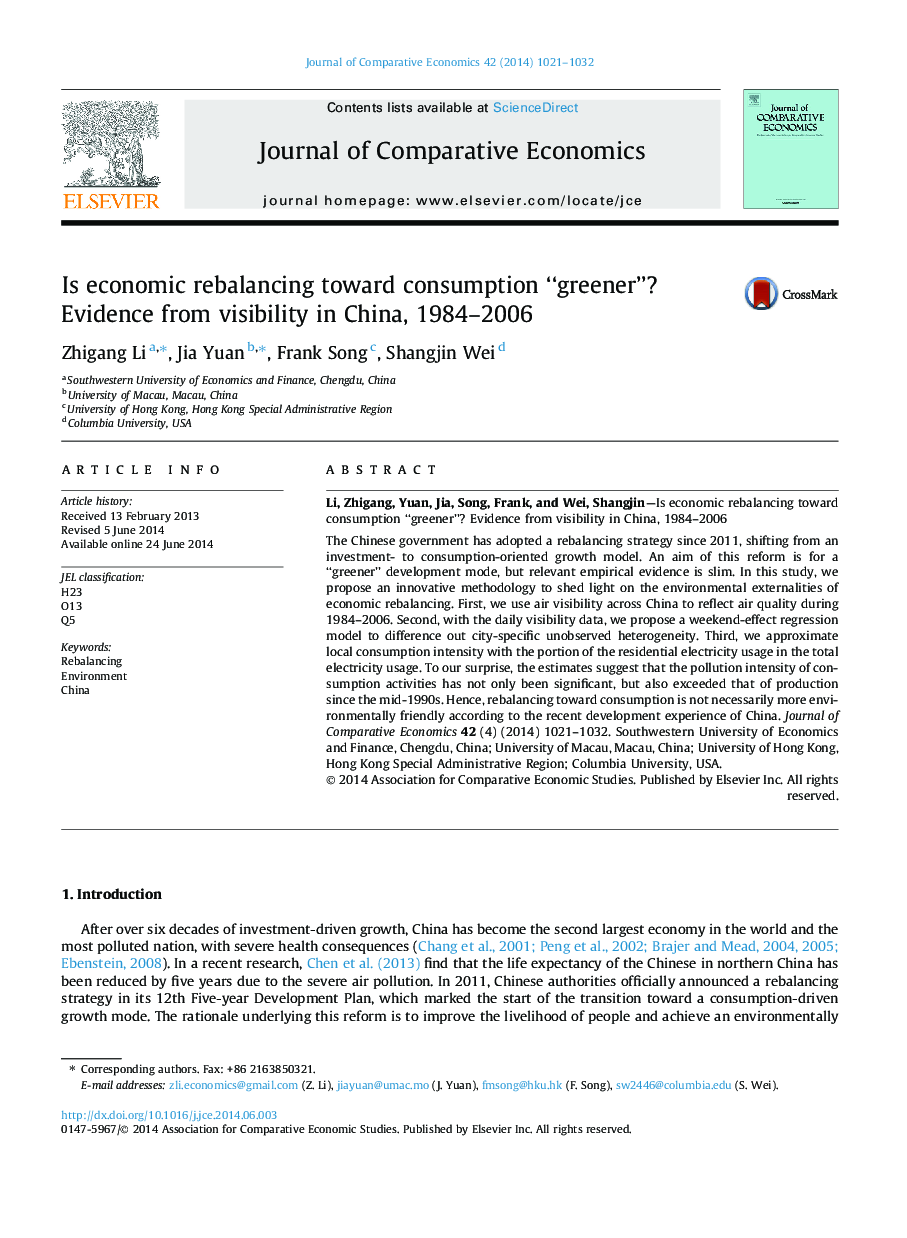| Article ID | Journal | Published Year | Pages | File Type |
|---|---|---|---|---|
| 5092326 | Journal of Comparative Economics | 2014 | 12 Pages |
Abstract
The Chinese government has adopted a rebalancing strategy since 2011, shifting from an investment- to consumption-oriented growth model. An aim of this reform is for a “greener” development mode, but relevant empirical evidence is slim. In this study, we propose an innovative methodology to shed light on the environmental externalities of economic rebalancing. First, we use air visibility across China to reflect air quality during 1984-2006. Second, with the daily visibility data, we propose a weekend-effect regression model to difference out city-specific unobserved heterogeneity. Third, we approximate local consumption intensity with the portion of the residential electricity usage in the total electricity usage. To our surprise, the estimates suggest that the pollution intensity of consumption activities has not only been significant, but also exceeded that of production since the mid-1990s. Hence, rebalancing toward consumption is not necessarily more environmentally friendly according to the recent development experience of China.
Keywords
Related Topics
Social Sciences and Humanities
Economics, Econometrics and Finance
Economics and Econometrics
Authors
Zhigang Li, Jia Yuan, Frank Song, Shangjin Wei,
